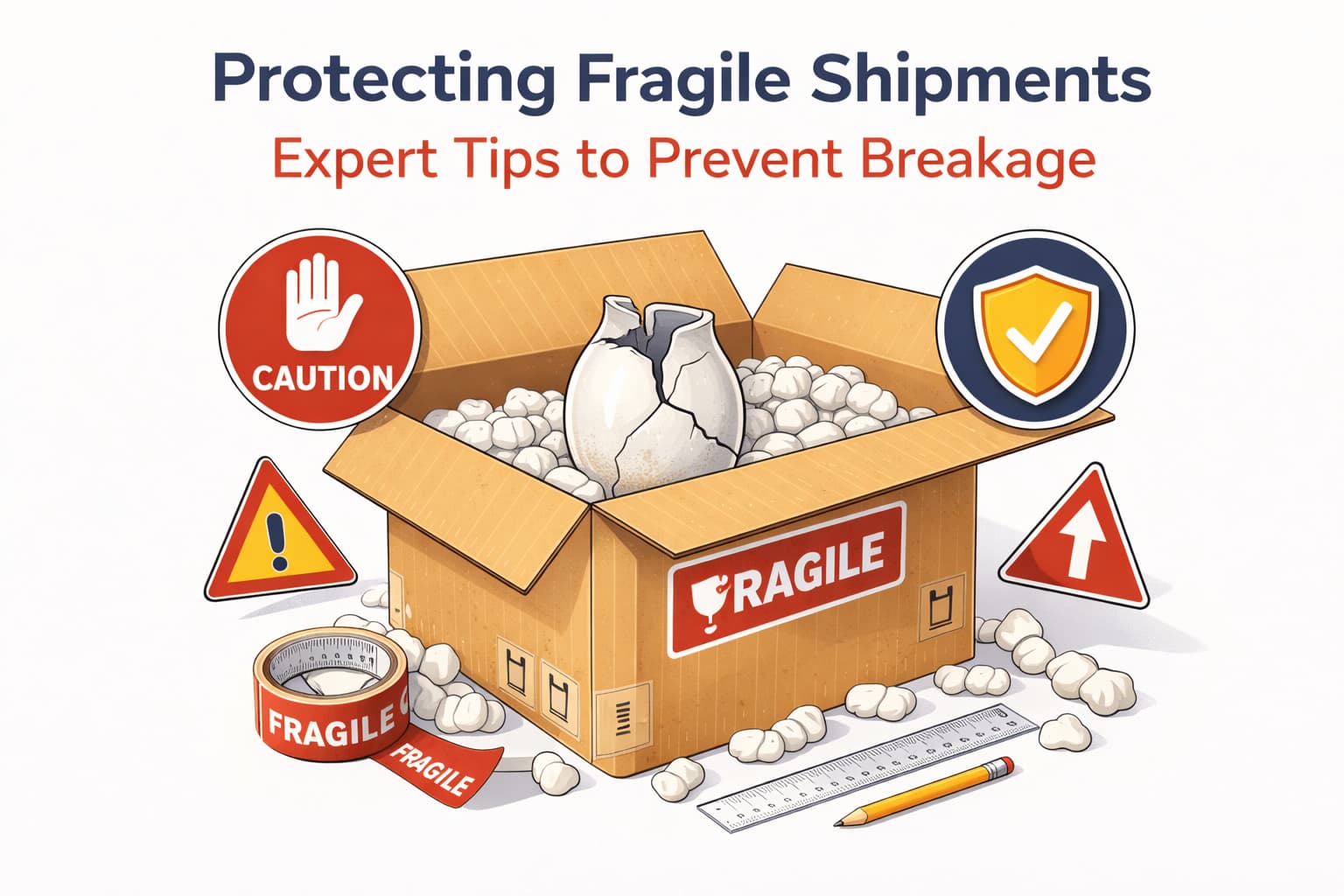Protecting Fragile Shipments: Expert Tips To Prevent Breakage
2026-01-03 13:08:05
'Handle with care' is a timeless saying that applies to shipping fragile items. The chance of damage during transit is always present, but careful packaging can greatly lower this risk. In this article, we share expert tips to protect fragile shipments and avoid breakage. We discuss common causes of damage, such as boxes shifting and accidental drops, and recommend effective prevention methods. From selecting the appropriate box size to using fillers like bubble wrap and packing peanuts, we highlight best practices for maximum protection. We also cover proper wrapping techniques, minimizing tape use, clear labeling, and the option of adding shipping insurance for extra security. By following these expert recommendations, you can greatly reduce the risk of damage to your fragile shipments, giving peace of mind to both shippers and recipients.
Key Takeaways
- Risk of damage when shipping fragile packages is unavoidable, but can be minimized through careful packaging.
- Choosing the right box size and using appropriate fillers, such as bubble wrap or packing peanuts, can enhance protection and reduce unnecessary handling costs.
- Properly labeling packages as fragile or handle with care adds extra security, and shipping insurance is recommended for added protection.
- Clear communication with customers, including informing them that the item is fragile, carefully packaged, and labeled, can help set expectations and provide options for refund or replacement if the item arrives damaged.
What is it?
The current subtopic focuses on identifying and understanding the factors contributing to breakage during the shipment of fragile products, as well as on recommended strategies to mitigate these risks.
One crucial aspect of protecting fragile shipments is safe packaging. It is essential to choose the right box size to avoid unnecessary handling costs and increase protection. Ideal packaging involves leaving two inches of space around all sides of the fragile item. Additionally, using appropriate fillers such as bubble wrap, packing peanuts, air bags/pillows, crumpled packing paper, or foam enclosures can help prevent item movement and reduce the risk of breakage.
Another critical factor in protecting fragile shipments is selecting the right carrier. Thoroughly researching carriers and their services is recommended to ensure the best option is chosen based on destination, rates, and tracking capabilities.
Causes and Prevention
.jpg)
Packaging and shipping delicate items require careful consideration of potential sources of damage and the implementation of preventive measures. Common risks associated with shipping fragile products include shifting boxes, road bumps, and accidental drops. To effectively mitigate these risks, proper packaging techniques are crucial.
Choosing the right box size is essential to avoid unnecessary handling costs and increase protection. Ideally, there should be two inches of space around all sides of the fragile item to provide adequate cushioning. Fillers such as bubble wrap, packing peanuts, air bags/pillows, crumpled packing paper, and foam enclosures can be used to protect the item further.
It is essential to avoid using cheap boxes and packaging materials, as they can lead to more losses and customer dissatisfaction. Proper wrapping techniques, minimal tape usage, and filling the remaining space in the box are also necessary to prevent item movement. Additionally, labeling the package as fragile or handle with care adds extra security.
The Power of Packaging Design
Once you’ve built a loyal customer base and established repeat sales, the next step is ensuring your bath bomb brand captures attention in retail spaces. Packaging plays a vital role here—it should not only reflect your brand identity but also stand out on crowded shelves. Using bold colors, creative graphics, and distinctive shapes can immediately grab attention, while clear labeling of scents, ingredients, and unique product features helps shoppers make quick and confident decisions.
Turning Packaging into a Marketing Tool
Beyond aesthetics, packaging can also serve as a marketing tool to boost credibility and trust. Highlighting customer testimonials, reviews, or brand values directly on the packaging can influence buying decisions and strengthen retailer confidence in stocking your products. By blending eye-catching design with informative and trust-building elements, your packaging becomes more than just a container—it becomes a powerful tool to maximize shelf appeal and spark retailer interest.
Frequently Asked Questions
Are there any specific shipping carriers that specialize in handling fragile shipments?
Shipping carriers specializing in fragile shipments include UPS, FedEx, and DHL. These carriers offer packaging services and reimbursement for lost or damaged goods. Rethinking packaging materials for fragile items is crucial to ensure safe transportation.
What alternative packaging materials can be used besides bubble wrap and packing peanuts?
Eco-friendly packaging options provide innovative alternatives to bubble wrap and packing peanuts. Examples include biodegradable air pillows, recycled paper fillers, and compostable foam enclosures. These materials offer protection while minimizing environmental impact.
Is it necessary to purchase shipping insurance for every fragile item being shipped?
Shipping insurance for fragile items is not necessary for every shipment, but it is highly recommended. It provides added security and helps recoup costs in case of accidents or unforeseen circumstances. Should fragile items be double-boxed?
How should fragile items be labeled to ensure they receive extra care during shipping?
Fragile items should be labeled as "fragile" or "handle with care" to ensure they receive extra care during shipping. This helps notify carriers of the package's delicate nature and encourages them to handle it with care. Proper packaging techniques should also be employed to minimize the risk of damage during transit. Common mistakes to avoid when shipping fragile items include using cheap boxes and packaging materials, failing to fill the box, and excessive taping.
What should customers do if they receive a damaged item despite following all the recommended packaging guidelines?
Customers who receive a damaged item despite following the carrier's recommended packaging guidelines can seek compensation from the carrier. Legal action can be pursued if the airline fails to provide reimbursement for the damaged goods.
